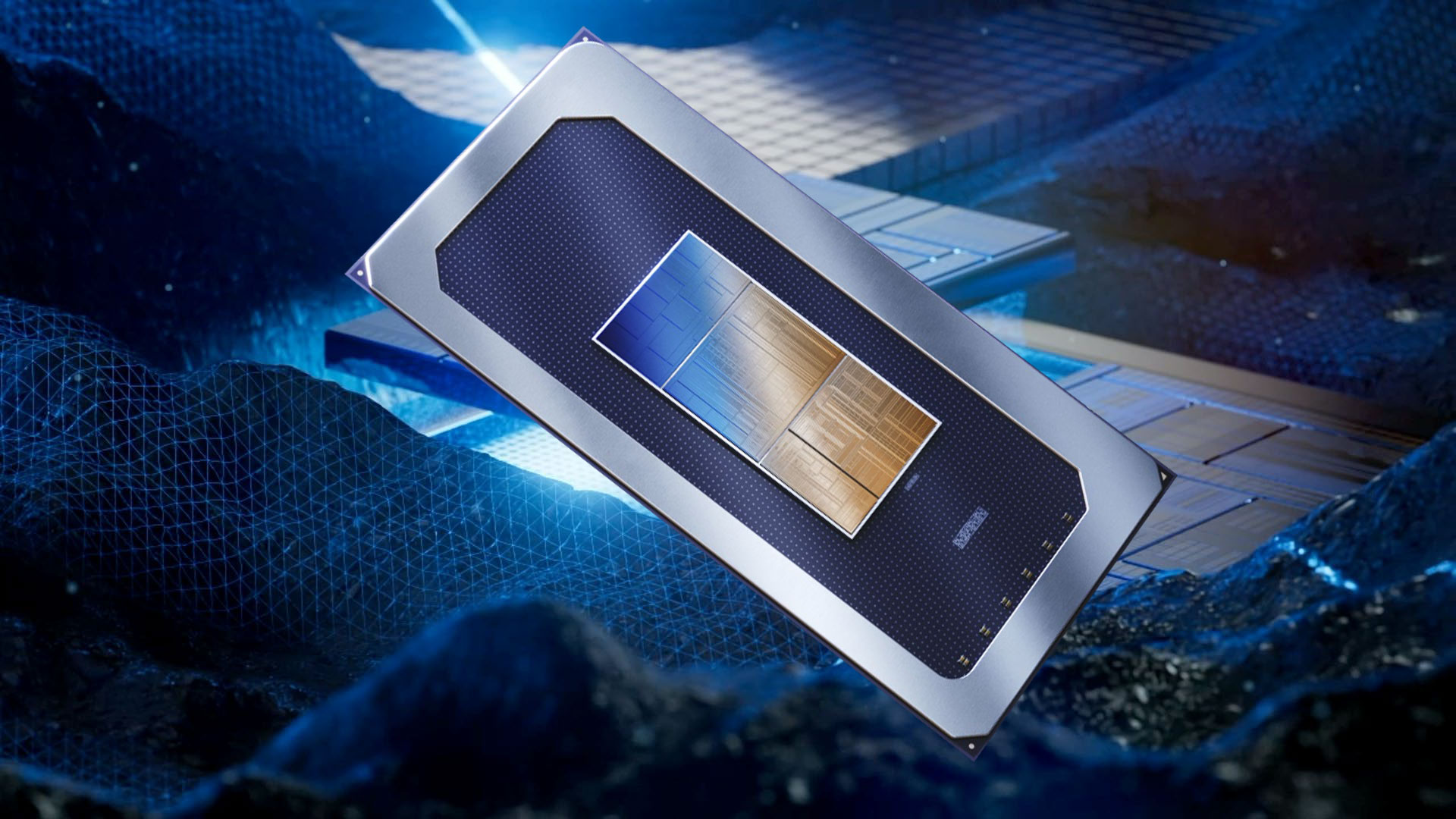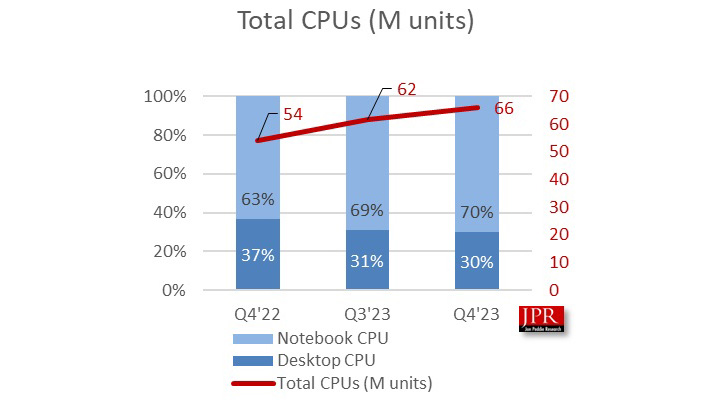CPU shipments surpass levels during the pandemic era — demand for AMD and Intel processors has recovered
JPR reports that the CPU industry has fully recovered from the 2023 recession.

CPU shipments are strong, Jon Peddie Research reports, exceeding the level of shipments that occurred during the pandemic era. Since Q4 2022, CPU shipments have increased by 7% every quarter, marking a 22% increase over the past year. Similarly, as nearly all modern processors include integrated graphics, iGPU shipments have also increased by 18% year over year, with a projected market share of 98% by 2025.
The news reveals that the CPU market has fully recovered from demand lost in early 2023, exceeding shipment levels during the pandemic era in 2021–2022. Total CPU shipments have reached 66 million units, which is 3.3 million more shipments compared to Q3 2022 when the pandemic ended.

However, one metric that is not consistent with the pandemic era is the amount of notebook CPUs being shipped compared to desktop chips. During the pandemic, desktop chips rose in demand, consuming 37% of all shipments made during Q4 2022. But in Q4 2023, Jon Peddie Research found that just 30% of all shipments were desktop chips, the other 70% being mobile CPUs.
So while the overall CPU market is super strong, the desktop CPU market is still not as strong as it once was. This makes sense, considering that many people have returned to their offices and are no longer confined to their homes where a desktop would be more appropriate. Working outside of the home inevitably drives up demand for laptop computers, so people can have a work machine on themselves wherever they go.
Intel and AMD have also been busy with new product launches, including Intel's Meteor Lake CPUs and AMD's Ryzen 8000 mobile series CPUs. Both of these probably helped boost mobile CPU sales as well.

Integrated GPU (iGPU) shipments have also increased in conjunction with the overall CPU shipments, reaching 60 million units shipped according to Jon Peddie Research. But what is interesting is that Jon Peddie predicts that iGPU market penetration will reach a whopping 98% by 2025.
Undoubtedly this growing trend is supported by the growing demand of mobile CPUs as we previously discussed. On top of this, integrated graphics chips have evolved into more powerful chips that are capable of doing many tasks that previously might have required a dedicated GPU. iGPUs such as the ones found in AMD's new Ryzen 8700G can almost match the performance of Nvidia's GTX 1650 which is an entry-level gaming graphics card.
Of course the more likely reason iGPU shipments continue to increase is that both AMD and Intel now have graphics included in nearly all of their consumer products. AMD's previous generation Ryzen 5000-series (and earlier) CPUs did not have integrated graphics, outside of specific models that used a different die (i.e. Ryzen 5 3400G and Ryzen 3 3200G). The latest Ryzen 7000-series parts now all include an iGPU — a rather anemic two compute unit model that's designed to provide base functionality rather than performance.
Stay On the Cutting Edge: Get the Tom's Hardware Newsletter
Get Tom's Hardware's best news and in-depth reviews, straight to your inbox.

Aaron Klotz is a contributing writer for Tom’s Hardware, covering news related to computer hardware such as CPUs, and graphics cards.
-
bit_user Replythe desktop CPU market is still not as strong as it once was. This makes sense, considering that many people have returned to their offices and are no longer confined to their homes where a desktop would be more appropriate.
No mention of crypto mining?
Jon Peddie predicts that iGPU market penetration will reach a whopping 98% by 2025.
I assume they mean 98% of PCs will have an iGPU, as opposed to 98% of them having only an iGPU. Either way, it'd be nice if this were a bit clearer.